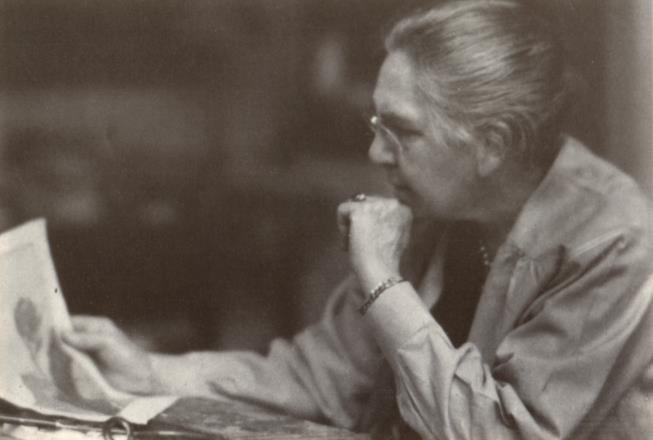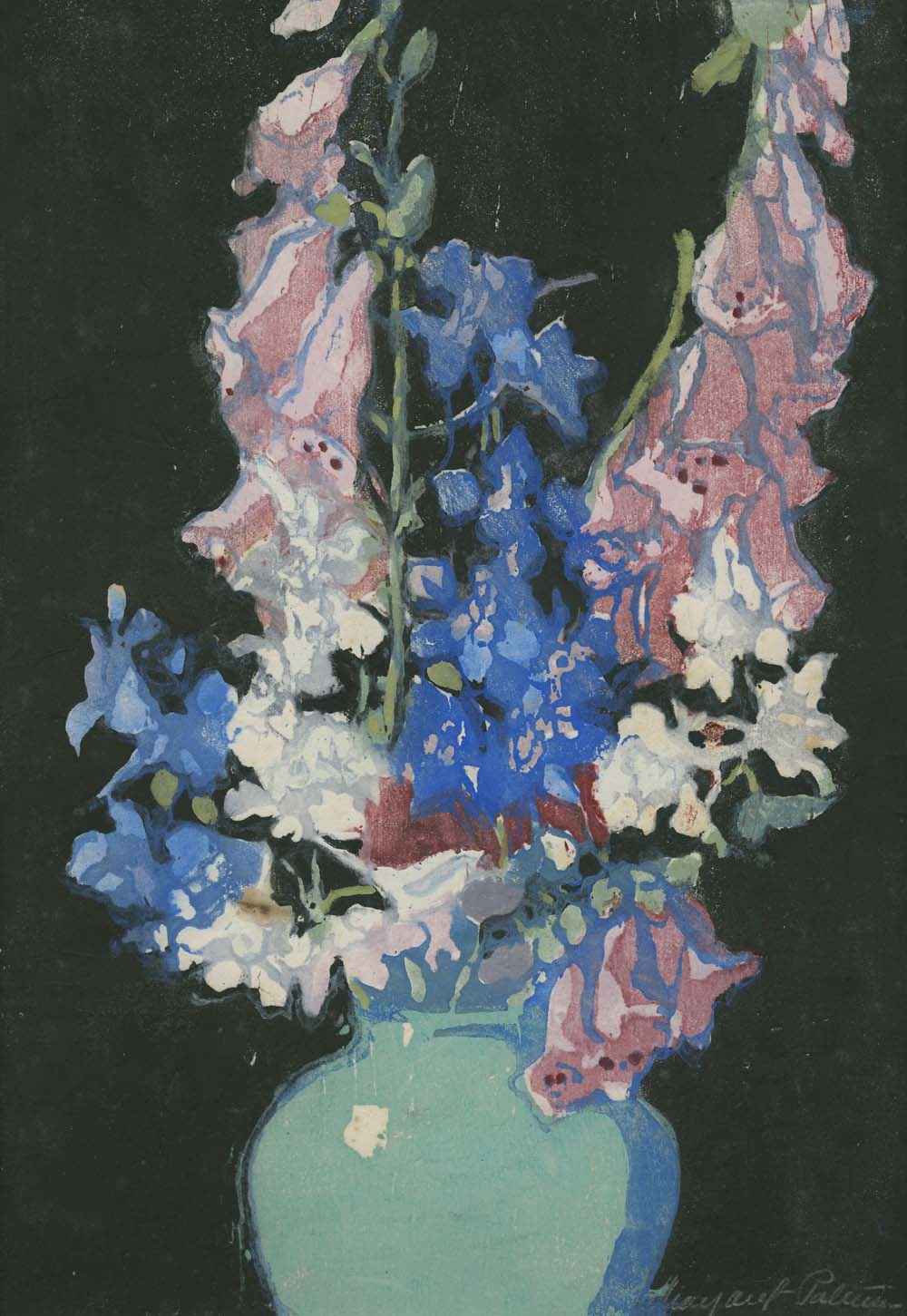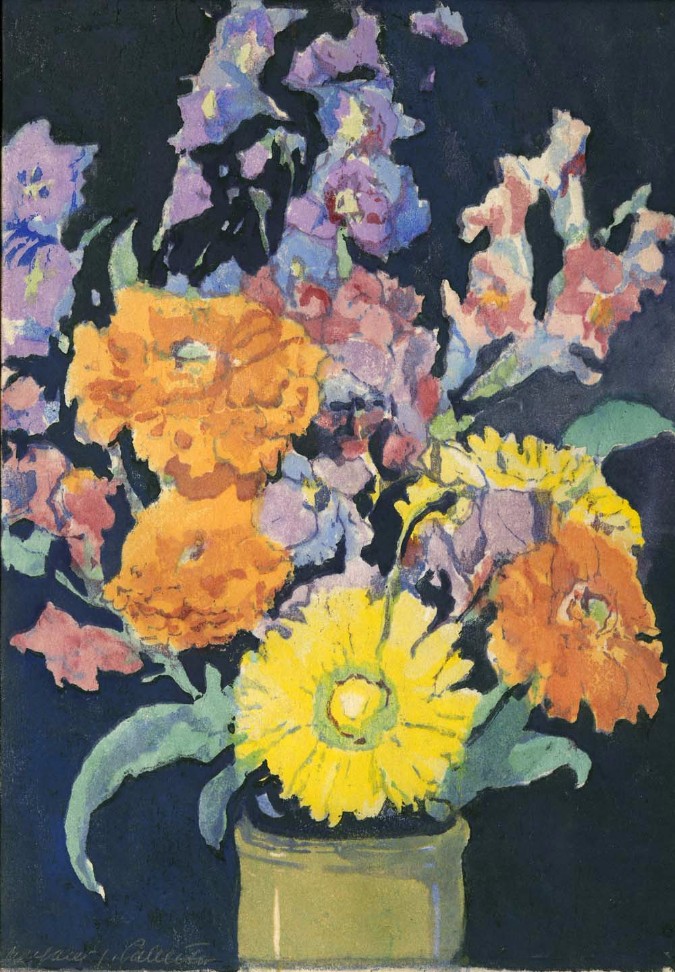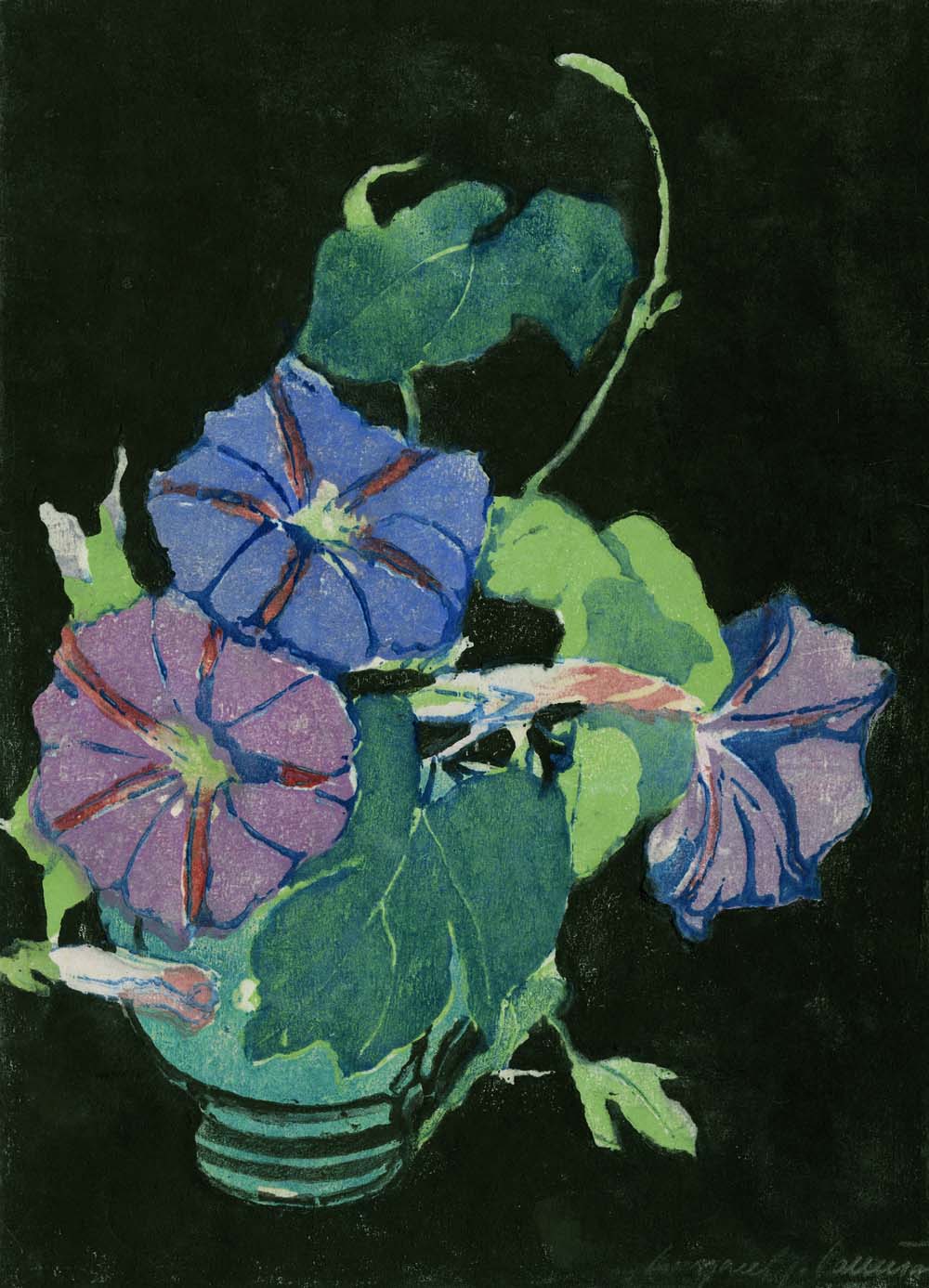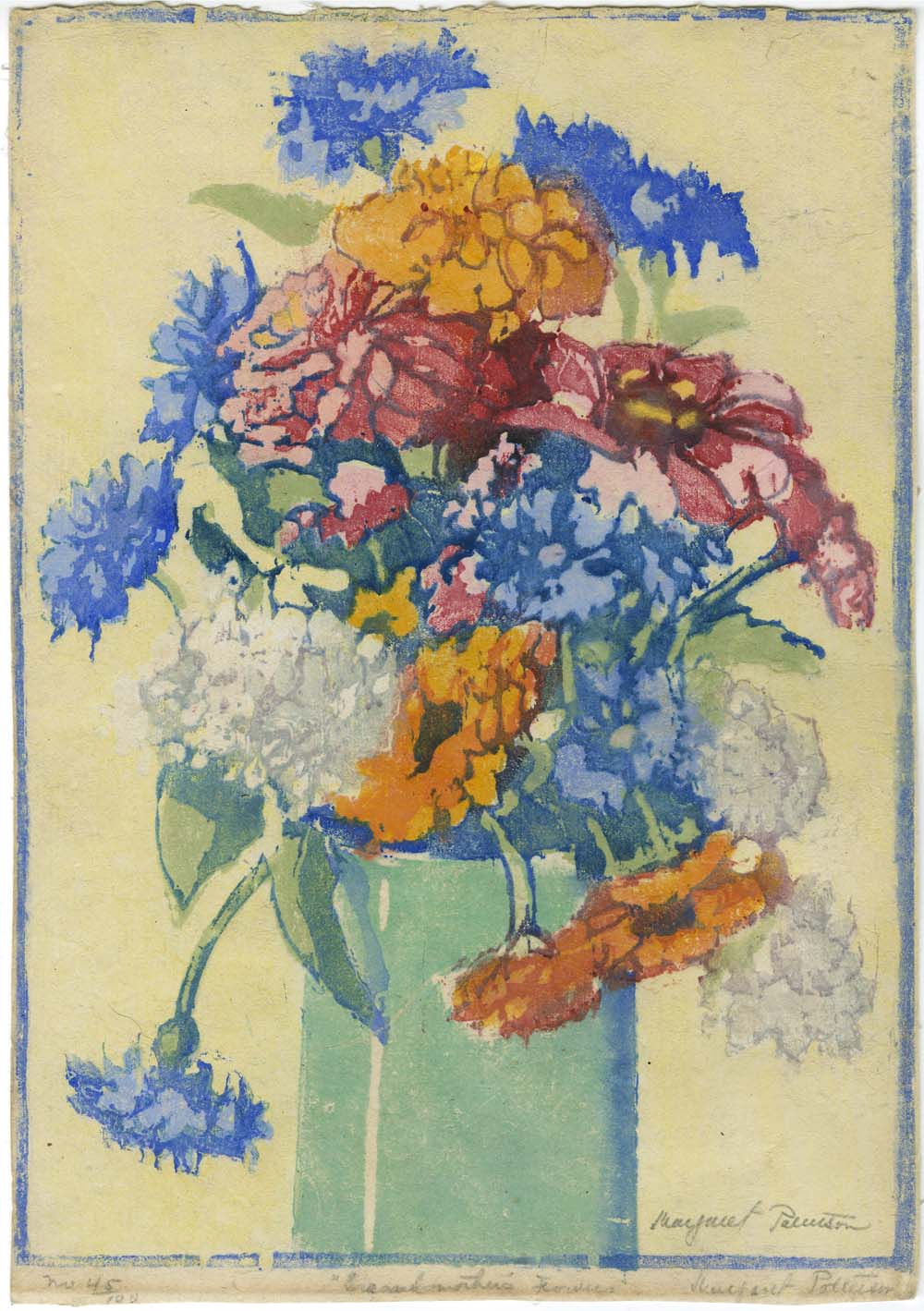Newsletter
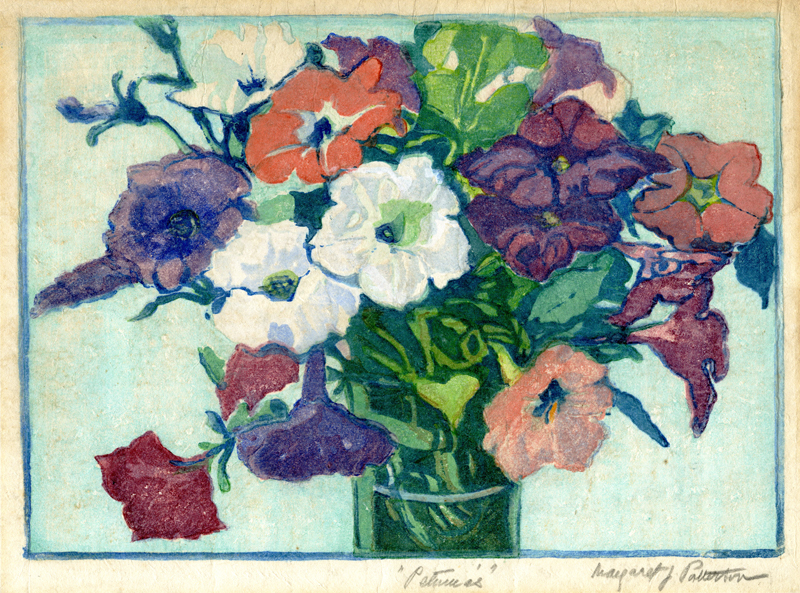
Margaret J. Patterson - Petunias, c. 1920-1950, 7 ¼" x 10 ⅛", Signed in pencil (lower right), titled in pencil (lower center).
The Two Red Roses Foundation has recently acquired Petunias (c. 1920), a beautifully designed and richly colored woodblock print by master American printmaker Margaret Jordan Patterson (1867-1950), along with the three double-sided original, hand carved wooden blocks used in printing this signature floral woodcut. These blocks are unique finds that add to the rarity and interest of the print by connecting the artist to the work in a very personal way. Margaret Patterson created multiple color woodblock prints using extremely intricate and difficult to control techniques. These double-sided blocks offer evidence of the highly developed procedures Patterson used in the execution of Petunias.
The TRRF is gladdened by the renewed interest being shown in learning the process of block printing as shown by the growing popularity and availability of beginner classes and seminars on the subject. Unlike other printing processes, woodblock prints are not merely reproductions, and the minute variations and experimentation at any stage make each and every woodblock print a unique work of fine art. In no other medium is the solo artist doing the work of the draftsman, designer, colorist, carver and printer. Unlike etching and other forms of printmaking, mechanical assistance is not at all necessary and woodblocks are done with the simplest of tools. The production is long and complex but the rewards are great, making the woodblock print truly a work of head, heart and hands.
Since attempting to explain the elaborate details of the process involved in the making of a multi-color, multi-block print is beyond the scope of this newsletter, we are pleased to provide you a link to an essay written by popular local artist, instructor and Roycrofter Master, Holly Bird that describes in technical detail, this complicated process. However, for those interested in a basic and illustrated account of the steps to making a simple woodblock print, we refer you to the following link.
Margaret Patterson, daughter and granddaughter of sea captains, was born in 1867 at the Marine Hotel in Soerabaija on the island of Java. Her parents, Alfred Patterson and Sarah Frances were in the middle of a voyage at the time of her birth. Patterson grew up in Maine and Boston, and her earliest art training came through a correspondence course. In 1895 she attended Pratt Institute in New York. Although Patterson attended art classes at Pratt for a year, it was through her personal associations with artists such as Arthur Wesley Dow and Charles H. Woodbury that she learned the principles that most influenced her art. Dow and Woodbury were enthusiastic teachers who were eager to share their theories on art. From Dow's lessons, Patterson developed her sense of composition, the placement of items within a scene, and Patterson's energetic brushwork may have been influenced by Woodbury's teachings.
After returning to Boston, Patterson taught art in the public schools. Several years later she took a position as the head of the art department at the preparatory school for girls, Dana Hall, in Wellesley, Massachusetts. She continued in this job until her retirement in 1940. While teaching, Patterson continued to create art and participate in the Boston art community. Beginning in 1899, Patterson took summer trips to Europe where she made many sketches and found inspiration for the finished paintings and prints she made the rest of the year. Her travels took her to various places in Europe: France, Belgium, Holland, Spain and Italy. Art critics commented on a surge of color in her work after she returned from Spain. It was while on a summer trip in Paris that Patterson learned to make color prints. Her teacher was most likely Ethel Mars an artist from Illinois who had been living in Paris. During World War I, Patterson stayed closer to home, visiting and painting in Cape Cod and the New England countryside.
Patterson's paintings and prints often represented landscapes she had seen during her travels. However, during the 1920s she began to focus more on floral subjects for her color prints. One of her early flower prints was Water Lily showing the beautiful flower floating on a pond (TRRF owns a copy of this woodblock print as well as the preparatory pencil sketch and watercolor) but more often flowers were shown in a vase with a background in a contrasting color. With their multitude of colors and beautiful shapes, flowers brought out the very best in Patterson's talent as a colorist and aptitude for design. Patterson captured the essence of individualized flowers with flat, patches of color and tight, close composition. Bouquets of old-fashioned blossoms — Morning Glories, Garden Flowers, Grandmother’s Flowers, and The Bouquet are called out by name. After a lifetime of travel, flowers might seem like a limiting subject, but that was not the case for Patterson who saw endless possibilities in the variety of shapes and colors. The flower prints were an opportunity to apply and expand the skills she had accumulated through a life in art. Margaret Jordan Patterson died in Boston on February 17, 1950.
Collections holding her work include the Victoria and Albert Museum, Cleveland Museum of Art, Metropolitan Museum, Rhode Island School of Design, Museum of Fine Arts Boston, Smithsonian American Art Museum, Art Institute of Chicago, as well as many others. The Two Red Roses Foundation owns twelve oils and gouaches and twenty-one woodblock prints, by Patterson, that will be included in the upcoming catalog "Arts and Crafts Woodblock Prints from the Two Red Roses Foundation". Four of her floral prints are shown below.
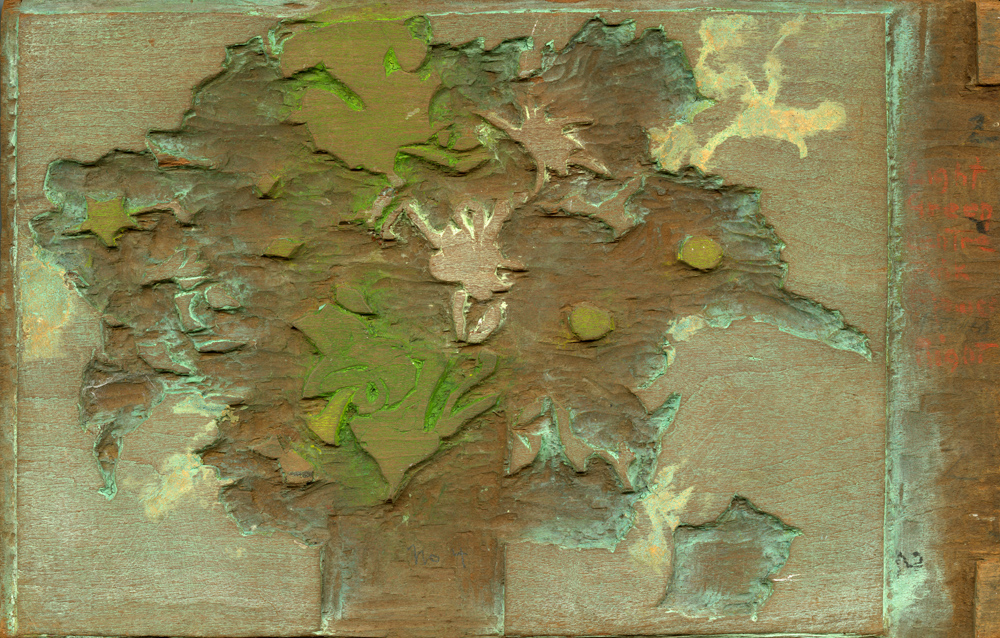
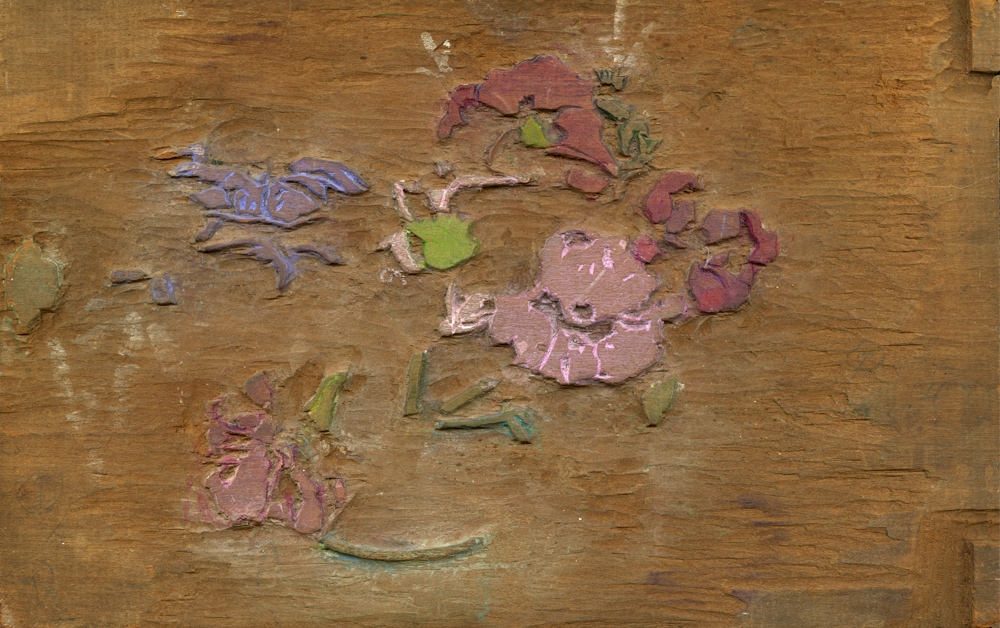
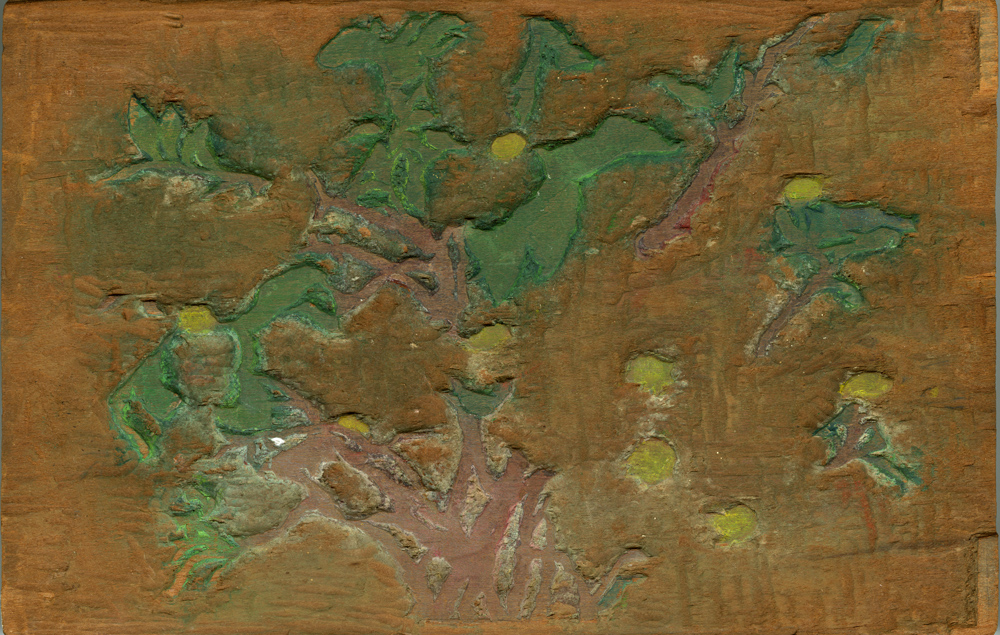
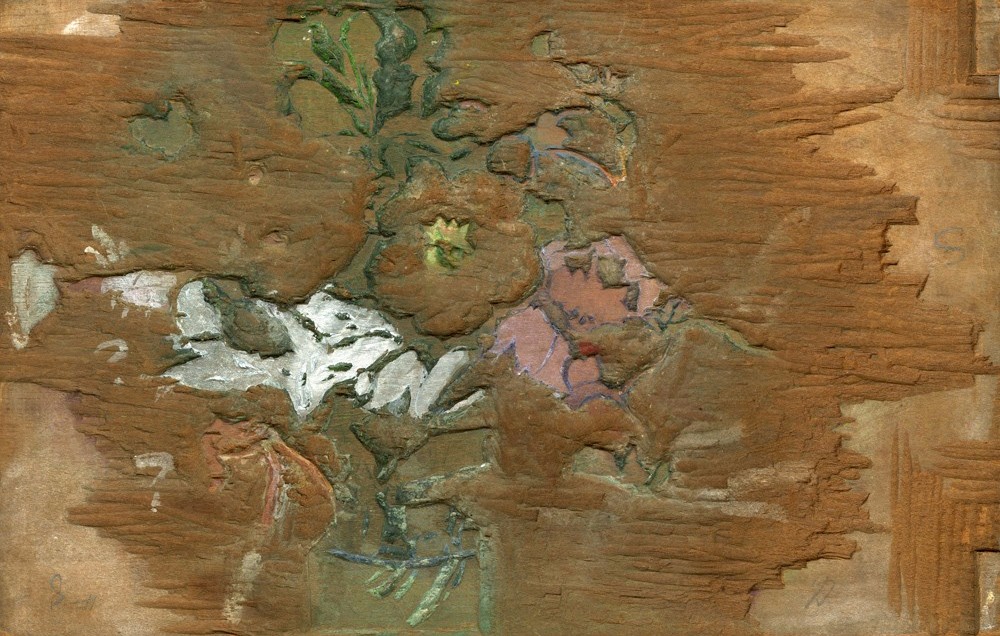
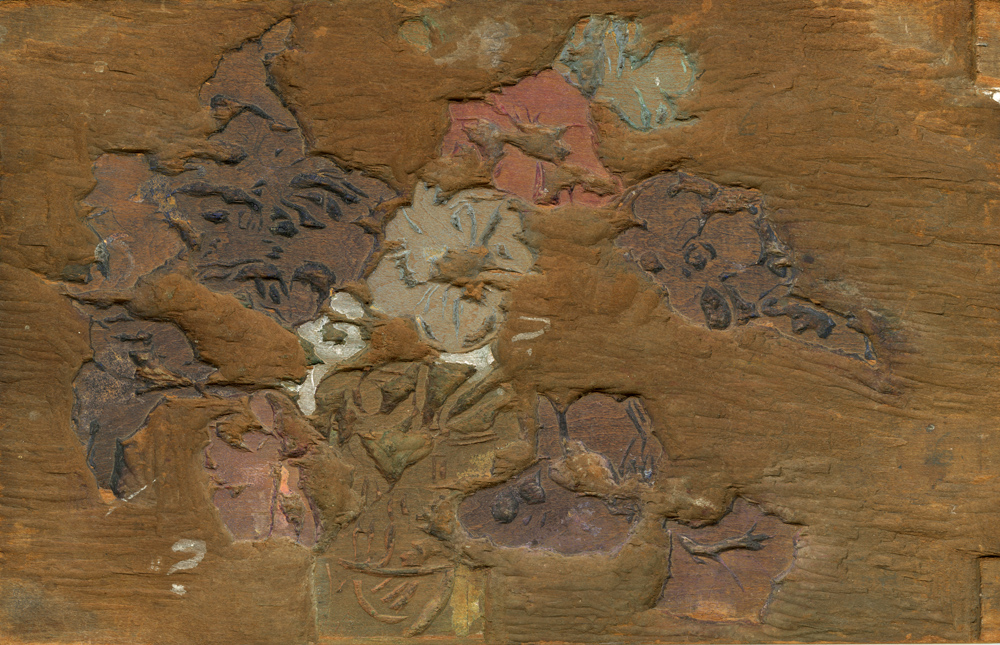
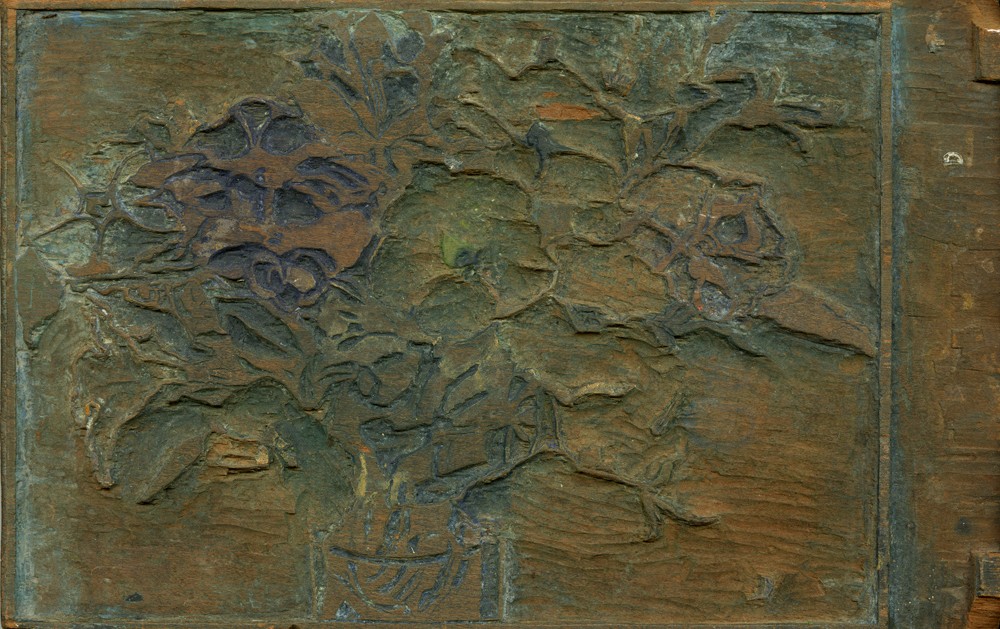
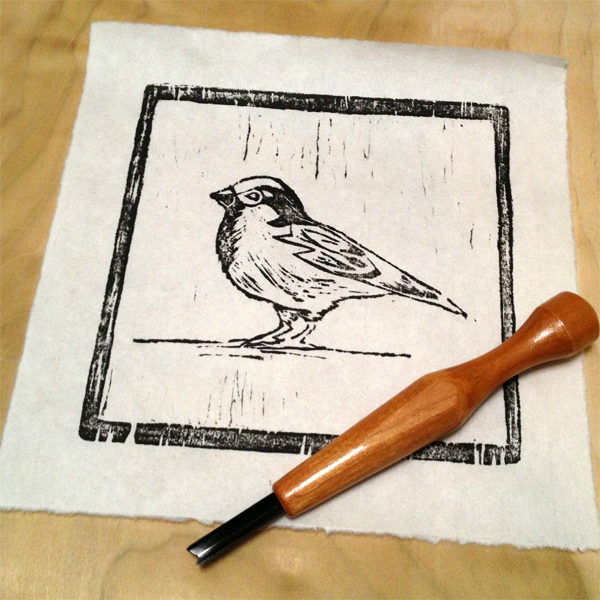 Printmaking Essentials: Carve and Print Your Own Woodblock by Erica Munoz
Printmaking Essentials: Carve and Print Your Own Woodblock by Erica Munoz